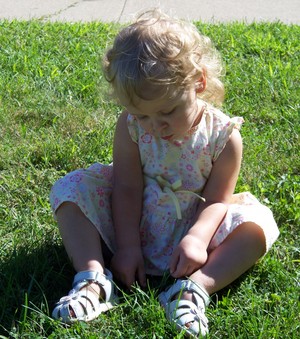Violence on Television and Its Effects on Children
There is no doubt that television has changed the world and how we view it. With just the point and click of a button, the viewing possibilities are endless. There are literally hundreds of channels to choose from. Cartoons, sitcoms, news, cooking shows, and music videos fill the airwaves. With so many viewing options, determining what we should be watching has become a great concern, especially when it comes to children. It is no wonder that cable and satellite providers have built in parental controls. Violent and aggressive acts abound on TV. Many times it is children who are viewing these acts. Some people believe that such viewing habits directly affect children. According to the Center for Media and Public affairs, “The typical American child will have witnessed 40,000 killings and 200,000 acts of violence on television”, all by their 18th birthday (Media Violence 121). These statistics are shocking. It is no wonder that the question arises, what impact does viewing violence on television have on children?
There has been overwhelming evidence that suggest viewing violent and aggressive behavior on television, does in deed directly affect children. Children are great imitators. Imaginary play and modeling their favorite characters are commonplace among the young. Children can and readily do imitate what they see. Just ask any parent whose child has learned their ABC’s by watching Sesame Street. They will all tell you that their child watched Big Bird, Ernie and the other characters reciting the alphabet over and over. After repeated viewing their child began reciting their ABC’s from memory. This act alone reinforces the idea, that through imitation and repeated exposure children can learn. Learning violence is no exception. It can be imitated and learned in the same manner as how the alphabet was committed to memory. The only difference is when children watch negative behavior, it is that negativity that they learn and mimic. It is not something as harmless as the ABC’s. Authorities on child behavior agree that what a child watches does indeed affect their behavior. According to The American Academy of Child and Adolescence Psychiatry, “Extensive viewing of television violence by children causes greater aggressiveness” (Cook et al.).
Desensitization can also play a roll in a child’s negative behavior. It occurs when children become physically and emotionally unresponsive to the violence and aggression they see on television. It is a fact that people react both physically and emotionally when they experience an episode of violence. It is an involuntary response and occurs even if the event is real or being portrayed fictitiously. After repeated exposure to violence, the typical psychological and physical responses can cease (Media Violence 121). Desensitization to violence occurs when a child repeatedly views it on television. Children who continually view violence on TV become desensitized and no longer conceder violence in the realm of fear, and can readily accept it as common behavior. This in turn can impact a child in a way that will not hinder him or her from acting out violently or aggressively.
Some people will argue that children actually learn morals and life lesson from some violence on television. In shows such as Power Rangers, Xmen and Justice League, the good guys always win and the bad guys are always punished. This idea helps children realize that bad acts are punishable. They will more often identify with the heroes in the story, and they themselves will aspire to be one of the good guys (Media Violence 53). There is no question that children can learn bad acts are punishable by watching the so-called good guys win. The problem is it also teaches the children how to handle the wrong doings by the bad guys. More often or not there is a huge battle between good and evil being portrayed on the screen. Those that are identified as being the good guys often use violence to subdue the evil wrong doers. This can include fighting, punching, kicking and other acts of aggression. The fact of the matter is, children are being taught violence solves problems. This fact is evident in a joint statement issued at the Children Congressional Public Heath Summit. Several prominent pediatricians claim, “Children who see a lot of violence are more likely to view violence as an effective way of settling conflicts” (Cook et al). It is also evident in the way children portray their favorite super hero. It is not hard to imagine a child who is pretending to be a super hero. The majority of them will draw their fist, pull out a pretend sword, or take a karate stance as if readying themselves to fight a battle. The reality is that even super heroes teach children violence is acceptable. This in turn can cause children to act aggressively, even when their intention is to do good.
What about the children who identify with the bad guys? There are those that argue it is actually the child’s own negative disposition that cause aggressive behavior. Children aggressive by nature will have a genre of television shows that encompass a large amount of violence. Their predisposition creates an urge for these types of shows. Their hostile behavior is not a result of the violence they are viewing, but from their own inclination of violence (Van Erva 63). This concept might hold true as to why they choose shows with violence. The argument is not what aggressive children choose to watch, but the effects of what they are watching. The fact of the matter is, allowing these types of children to view violence only encourages their own negative behavior. Because of their predisposition to violence, it only makes sense to closely monitor what they are watching on television. Allowing them to view more aggression can only reinforce their negative behavior, and cause it to become even more pronounced.
There have been studies performed to show the correlation between adolescence aggression and television violence. One such study was sited in Moller’s book, Youth Aggression and Violence. It involved three Canadian towns. Each town received identical Canadian television. Children with the same aggression level were exposed to U.S. TV. After viewing the American television networks, verbal and physical aggression rose significantly not only in children, but adults as well. The reports of physically aggressive acts tripled in number, and per minute verbal aggressive acts doubled in one town alone (Moeller 139). Canadian television has stricter laws regarding media violence than American television. This study shows that when children are exposed to the more aggressive television shows found on American networks, violence and aggression does rise dramatically. This directly reinforces the thesis that there is a link between violence on TV and the behavior of children.
While we have been arguing the immediate impact that violence and aggression have on children, it can also be noted that it can affect their personality as teenagers and adults. Children who watch violence and aggression on television can grow into teenagers and adults who have a violent and hostile disposition. The hostility that they view in their youth and teenage years can actually build a foundation for their adult characteristics. Children learn early on the moral values of life. As parents we try to teach them right from wrong. This is noted on the reinforcement we give children for positive behavior, and the punishment and explanation we render children in regards to negative behavior. The question is what moral values is television giving our children? As parents you might be surprised to know that a simple television show might be counteracting what you are trying to teach your child. Numerous is a non-profit organization devoted to children’s heath. They sponsor the website How TV Affects Your Child. On their website they state that commercials and television that show violence, aggression, and risk taking may influence the acts of teenagers. Teenagers may take part in risky behavior and violence if they view those types of behavior (How TV Affects Your Child). Based on additional research, The Atlantic Monthly relates that viewing violent television shows “better predicts adult aggressiveness than does a child’s initial aggressiveness, intellectual ability, or parents’ educational background” (Indirect Aggression). It is clearly evident that what are children view today will effect them tomorrow. There is no class of children that are immune to the negative effects that the violent media produces. It is detrimental that parents and caregivers pay special attention to the viewing habits of adolescence. By removing violent programming from children’s repertoires now, they are helping to create a better well-adjusted adult in the future.
Another important factor to take into consideration is that even programming targeted at children can contain violence. Cartoons are no exception. Cartoons actually contain some of the most violent acts found in television programming. They portray acts that in the real world would fatally harm an individual. The majority of people will remember their favorite cartoons as children. Wyle Coyote, Elmer Fudd, and even the infamous Tom and Jerry are notorious pranksters and perpetrators of violence. Who does not recall the falling anvil that crashes atop the poor unsuspecting, cartoon character’s head? Elmer Fudd is forever chasing Bugs Bunny with a rifle, ready to shoot him on site. Even Tom and Jerry readily makes use of situations that cut off tails, and smash their characters beyond recognition. Children often laugh at the violence being portrayed in cartoons such as these. In reality they are laughing at a character perpetrating violence and aggression toward another. When hostility is presented in a comical fashion such as this, young children may make the connection of violence and humor. This can cause a child to believe that pain and hurting someone is humorous. They do not realize aggressive acts can cause real harm. In a book called Violent Cartoons, the author points out that children less than five years old need help processing what they are viewing. Young children do not understand that cartoon violence is animation. They do not understand that cartoon violence does not reflect what happens in the real world (Dickenson 45). Since children cannot make that connection, they may in fact be more prone to act out the violence they see on a make believe cartoon. They may indeed not realize the repercussions of hurting someone in the real world. They do not make the connection between imaginary and reality. When a parent is watching what cartoons their children are viewing, it is always a good for parents to ask themselves if their child is old enough to distinguish between animation and reality.
If parents are genuinely concerned with what their children are viewing, there are several options available to them. They can watch the same programs their children are, and decide if that show is appropriate for their kids. They can also utilize parental control features now found on almost every satellite or cable company’s remote control. In the new age of technology there are also specialized websites where parents can review specific movies, television shows and cartoons. Parents generally write these reviews. Their intention is too make note of violent or controversial acts and may not be appropriate for children. With this information it allows a parent to make an informed decision when deciding what their children are allowed to view. They are also a great source for recommending appropriate shows for young audiences. Making use of these simple ideas and suggestions can help alleviate some concerns parents my have about the content their children are watching.
In closing we are not arguing the fact that violence and aggression are widely displayed on television. Nor are we arguing the censorship of violence. We are however arguing what effect television violence has on children. Will children who view acts of aggression on television exhibit hostile aggression? The majority of the evidence concludes that the answer is yes. Parents should keep that in mind the next time their children are watching television. What characters are their children imitating on television? Are they barking like the innocent dog on Blue’s Clues, or are they pretending to be in a fighting stance ready to punch the bad guy? A dog is pretty harmless, but a punch thrown at a younger sibling can be detrimental to the physical and mental well being of both children. Cable and satellite companies put parental controls on remote controls for a reason. Parents and caregivers are ultimately responsible for what their children view on TV. It is recommended that parents exhibit their responsibility and take control of their children’s viewing habits. If your children are regularly watching violent and aggressive shows, change the channel. By doing so you will not only be deterring your children from committing hostile aggression, but helping to groom a better adult in years to come.
Works Cited
Cook, Donald E., et al. “Joint Statement on the Impact of Entertainment Violence on
Children Congressional Public Health Summit July 26, 2000.” American Academy of
Pediatrics. Web. 6 October 2009. http://www.aaporg/advocacy/releases/
Jstmtevc.htm>
Dickenson, Amy. “Violent Cartoons.” Time. n.p. 12 June 2000. Web. 8 October 2009.
“Indirect Aggression.” Atlantic Monthly (10727825) 292.3 (2003): 49. Literary Reference
Center. EBSCO. Web. 7 Oct. 2009.
“How TV Affects Your Child.” KidsHealth. Nemours, 2008. Web. 7 October 2009.
Media Violence Opposing Viewpoints. California: Greenhaven Press, 1999. Print.
Moeller, Thomas. Youth Aggression and Violence. Mahwah, N.J.: Lawrence Erlbaum
Associates, Publishers, 2001. Print.
Van Erva, Judith. Television and Child Development. 2nd ed. New Jersey: Lawrence
Erlbaum Associates, Inc., 1998. Print.




